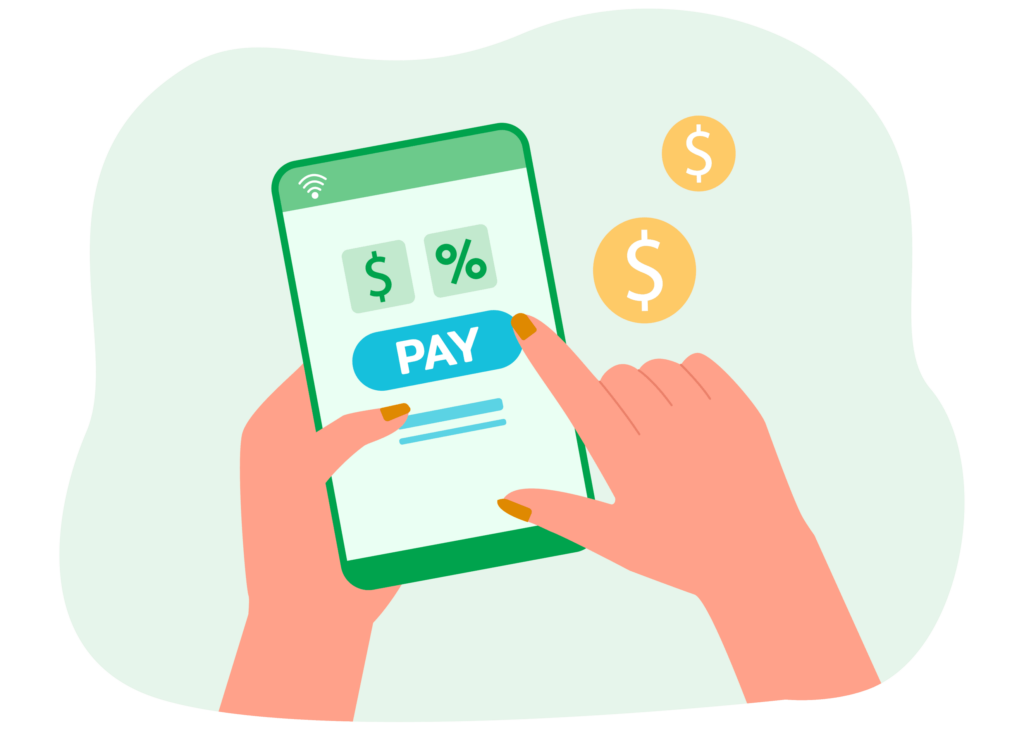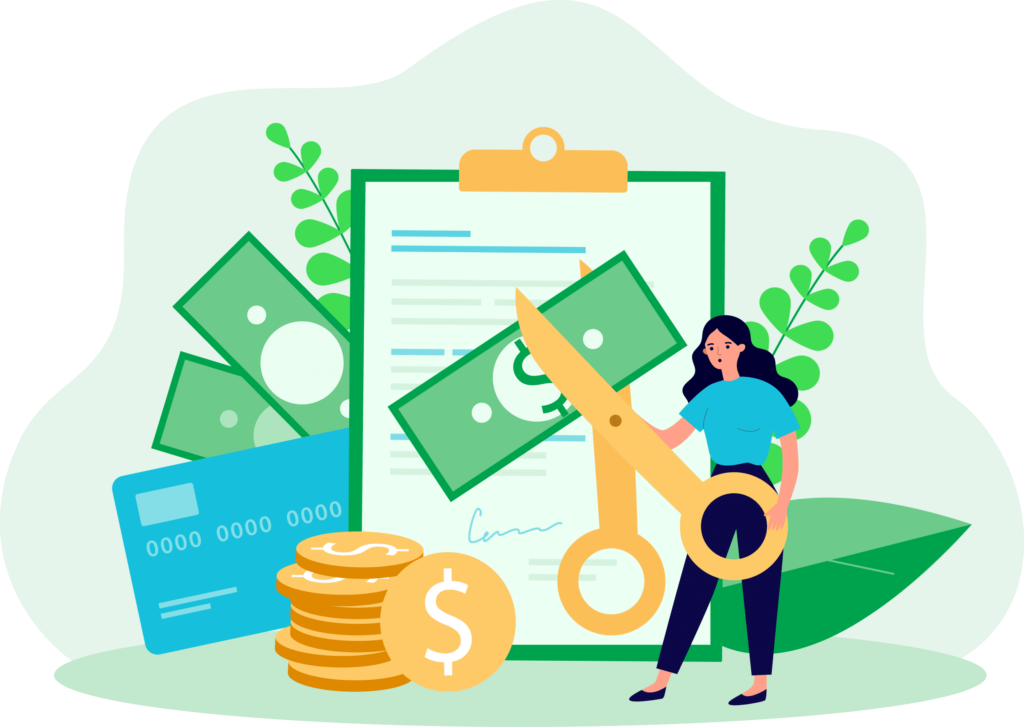Calculating your real-time rates from the industry's best lenders...
Get a Debt Consolidation Loan Today and Conquer Your Finances
Compare offers from top lenders in 2 minutes and ditch high-interest credit card debt for good.
How it works

Compare rates in 2 minutes and apply online.

Your loan is funded in as little as 1 business day.

Pay off existing credit card debt with the funds.

Moving forward, you’ll make one monthly payment with a low fixed interest rate.
Why choose a debt consolidation loan?
Credit card interest rates can be as high as 30% APR, so credit card debt can quickly spiral out of control. If you’re only making minimum payments, it could take years to pay off your debt and you could end up spending thousands on interest. With a debt consolidation loan, you could qualify for a lower interest rate and tackle your debt with fixed monthly payments.
Debt Consolidation Loan Benefits
Flexible Terms
Our lenders offer flexible repayment terms, so you can choose a monthly payment that fits your budget.
Get the Funds You Need
Whether you need a little or a lot, we’ve got you covered. Loan amounts from $600 to $200,000 are available.
Competitive Rates
With low rates, your high-interest credit card debt doesn’t stand a chance.
How to Apply for Debt Consolidation Loans With Purefy
1. Determine Your Loan Amount
Compile the balances of all credit cards and other debts you would like to consolidate.
2. Compare Rates and Lenders
Use our rate comparison tool to shop multiple lenders with one form without any impact to your credit. You’ll answer a few basic questions about your income and the purpose of the loan.
3. Select Your Loan and Apply
Once you determine the best option, simply select the lender to apply through their website. You may need to provide supporting documentation, such as income verification.
4. Receive Your Funds and Pay Off Debt
After approval, you’ll receive the funds and pay off your existing debts. Moving forward, you’ll have one monthly payment.

Don’t Overlook These Key Comparisons
When comparing offers for debt consolidation loans, it’s important to consider the following factors:
APR
An Annual Percentage Rate, or APR, is the interest rate for a whole year (rather than just a monthly fee or rate) as applied on a personal loan. This number may differ from your interest rate because it includes any fees associated with your loan.
Repayment Terms
A repayment term is the length of time a borrower has to repay their personal loan debt in full. Our partner lenders offer flexible repayment terms, with shorter terms typically offering the lowest rates.
Special Features
Consider if the loan includes any discounts for automatic payments. Some lenders will also offer a discount when the creditors are paid directly (rather than providing the funds to you to pay off your own debts).
Debt Consolidation Calculator
Personal loans can be used to consolidate your debt into a single loan with a new rate and term. See how much you can save by entering your loan information below.
Step 3: See How Much You Can Save
| Current Debt | Personal Loan | Savings | |
|---|---|---|---|
| Monthly Payment | $600 | $483 | $117 |
| Lifetime Interest | $5,400 | $2,399 | $3,001 |
| Time to Payoff Debt | 2 yrs 10 mos | 3 yrs | 2 mos |
Want to compare personalized prequalified rate offers from top personal loan companies? We’ve partnered with Credible to help get your finances back on track with free rate comparisons — with no impact on your credit score.
Debt Consolidation - FAQs
A debt consolidation loan might not make sense if you have bad credit and can’t get a lower interest rate. But if you have average-to-excellent credit, you have a good chance to qualify for a debt consolidation loan with a lower interest rate than your credit card APR. Even shaving a percentage point or two from your APR can save you money, and committing to a fixed repayment schedule allows you to conquer your debt rather than letting it snowball.
However, there are other options to consolidate debt beyond personal loans, so it’s important to explore your options. If you have a manageable amount of credit card debt, you may be able to secure a promotional 0% APR credit card and transfer your balances. If you’re in a position to pay off the debt within the promotional period, this may be a better option, although balance transfers typically involve fees (usually around 2% – 3%).
The process to consolidate debt with a personal loan is fairly simple. First, you’ll need to check rates to determine the best option – you can use a tool like Purefy’s rate comparison to see real-time offers from multiple lenders at once. Our rate comparison tool uses a soft credit pull, so there won’t be any impact on your credit score.
After receiving your personal loan offers, you can continue to the application, which typically can be completed in about 15 minutes through the lender’s website. You’ll then undergo a hard credit pull, and after approval, you may also need to provide a few supporting documents such as income verification or an ID. When your loan is fully approved and you eSign your loan documents, the lender will typically send funds directly to your bank account. From start to finish, the process can be completed within 1-3 business days on average, depending on the lender you choose.
Once you receive the funds, you’ll pay off your outstanding credit card debt. Moving forward, you’ll make one fixed payment each month instead of multiple payments.
Each lender may have their own criteria for debt consolidation loans, but generally speaking, you’ll need the following:
- A fair or good credit score – the higher the score, the lower your rate
- Verifiable income and employment
- Be at least 18 years old
- Be a U.S. Citizen or Permanent Resident with a Social Security Number
Every credit profile is unique, but in general, a debt consolidation personal loan will likely raise your credit score over time. You may see a temporary decrease in your credit score after applying and undergoing a hard credit check, but as you begin to repay the loan, your score will improve – as long as you aren’t accumulating more debt.
Since the application process is entirely online, you can be approved as soon as the same day with some lenders. On average, our partner lenders take between one and three days for approval and funding, but in some cases, it can take up to seven days to receive funds.
Even if you have bad credit, you could still qualify for a personal loan, but the lowest interest rates are reserved for the most creditworthy applicants. A cosigner can allow you to qualify for a lower interest rate if you have bad credit than you would on your own, however many lenders do not allow cosigners on personal loans.
If your credit is good-to-excellent, you probably won’t need a cosigner, but having one could help you qualify for a lower interest rate.
A balance transfer allows you to move the entire outstanding balance of one or more credit cards to a new credit card, often with a low or 0% promotional APR for a set period of time. Most credit cards will charge a balance transfer fee to accomplish this (which is typically 2% – 3%). If you are able to secure a 0% APR and pay off the balance within the promotional time period, a balance transfer can be a great way to consolidate debt. However, if you aren’t able to pay off the balance transfer within the promotional time period, your credit card APR will usually return to the double digits, and you’re back at square one.
Additionally, you may not be able to transfer all of your debt onto the card with the promotional APR if the credit limit is too low or there is a restriction on what percentage of the credit limit can be used for balance transfers.
A credit card debt consolidation loan will have a fixed interest rate and repayment period, and your monthly payment will never change. Rather than a six or 12-month period to repay a balance transfer, you’ll have an agreed upon amount of time to repay the debt consolidation loan, usually one to seven years. You also won’t need to worry about your interest rate doubling or even tripling since there’s no promotional time period like a balance transfer.
This will vary depending on the lender you choose, but if documentation is required, you can expect to provide some form of income verification (like a paystub or W-2) and identity verification.
In addition to balance transfers, there are other alternatives to debt consolidation loans, such as:
Credit counseling – non-profit credit counseling can help you create a budget and develop a plan to repay your debt. The U.S. Department of Justice has a list of approved credit counseling agencies you can work with, but be careful to avoid companies not on this list offering debt relief as they could be scams.
Debt repayment strategies – the debt snowball and debt avalanche are two methods for paying down debt. They each involve paying the minimum toward all of your accounts and focusing your attention on paying extra toward just one credit card account at a time. The debt snowball focuses on the account with the lowest balance first, while the debt avalanche method focuses on the account with the highest interest rate.
Debt consolidation and debt relief are not the same. Debt consolidation involves paying off existing credit card balances and other debts with a new loan that has an APR and repayment structure you choose.
Debt relief involves third party companies that often charge high fees to negotiate with creditors on your behalf. Debt relief services can be risky and can often leave you in more debt than you started due to fees and penalties, and your credit score can also take a hit.
Everything you need to know about personal loans for debt consolidation
LendKey Student Loan Refinance Review
If you are looking at options for refinancing your student...
Read MoreWhat Can You Use a Personal Loan For?
Personal loans are among the most versatile forms of credit,...
Read MoreHow to Pick the Best Personal Loan Lender
Whether your dog needs surgery or you want to update...
Read More



